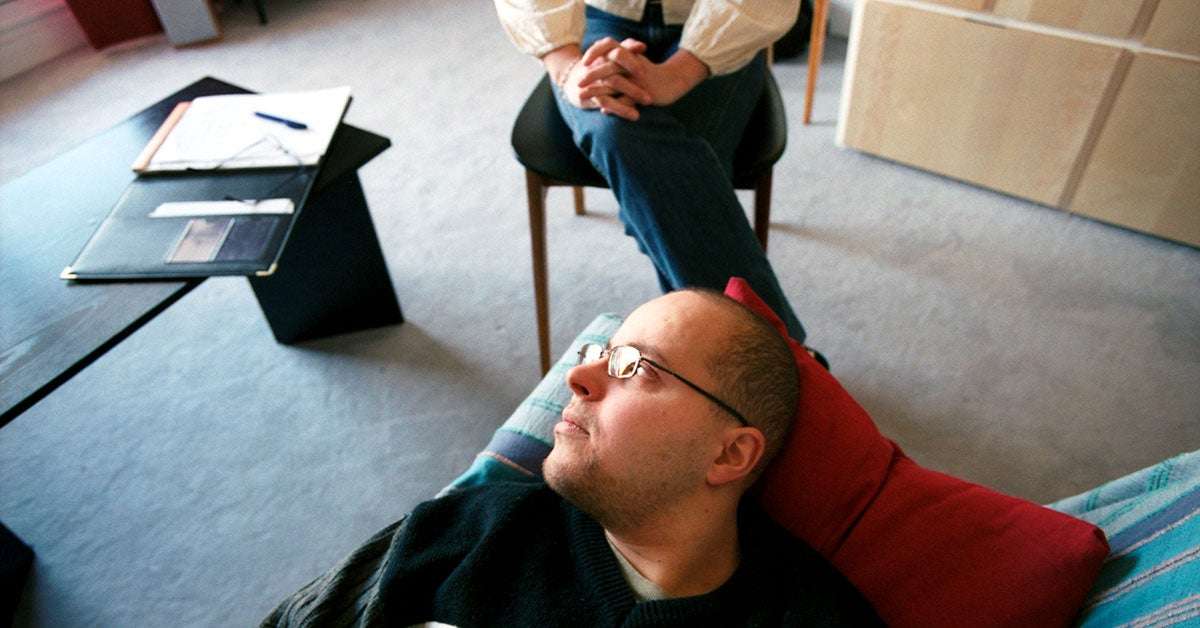4 Components of DBT
The principles of dialectical behavior therapy techniques are built on a few fundamental ideals. First, it was developed on the foundations of both science and philosophy. The first two core beliefs of DBT are “I am doing the best that I can” and “I need to learn new ways to do better and try harder.” Finally, a major thought in DBT is that everything in life is connected. The only stable, constant thing we can trust or rely on is that change is unavoidable.
“The 4 components of DBT are individual sessions, group therapy, phone coaching, and a consultation team. This multidimensional approach serves as a way to support individuals who are going through DBT treatment. Each part serves an important purpose and provides structure for the client.”
Talkspace Therapist Bisma Anwar, LMCH
There are four basic components of DBT. They include:
Using individual one-on-one therapy
Typically, DBT therapy sessions will include one individual session per week with a trained therapist. During your sessions, you’ll focus on major issues in your life. You’ll work to explore how your beliefs, your thoughts, and the expectations you have of your world might add to difficulties you’re having in specific areas of your life.
You’ll learn how to find new ways to handle things, and you’ll practice DBT skills that’ll help you create a reality and world that’s something you can function in successfully. You’ll remain in individual therapy during the entire DBT process.
Therapist training must be a priority
There’s a strong emphasis on the training DBT therapists must undergo. Additionally, they’re required to stay up to date with the most current findings in regards to DBT, while also being sure to keep up with recent research, studies, and all other mental health treatment aspects.
Help must always be available
DBT, when used traditionally, offers you access to a coach via phone should you need to contact someone in between your therapy sessions. This person doesn’t necessarily need to be your therapist, but it could be. It might also be another DBT-trained therapist or a trained phone coach.
Phone use is encouraged, but it’s not intended to be something that’s abused. The calls shouldn’t become habitual. You can’t continuously reach out to go over things that you’re working on in therapy without trying to put your new DBT skills into practice on your own. If you begin to use the calls as a crutch, they will be addressed in your regular therapy sessions.
Group therapy is a must
Unlike most other cognitive behavioral therapy techniques, where you’d normally go to either group or individual therapy, with DBT, you’ll attend both formats. Group therapy for DBT involves lectures, discussions, and the opportunity to practice and implement techniques you’re learning. Group sessions will often take place once a week over the course of about 5 months. It’s important to attend every session to get the most out of the format.
What is DBT?
DBT refers to dialectical behavioral therapy. It’s an approach to therapy that can help you learn to cope with difficult emotions.
DBT originated from the work of psychologist Marsha Linehan, who worked with people living with borderline personality disorder (BPD) or ongoing thoughts of suicide.
Today, it’s still used to treat BPD as well as a range of other conditions, including:
- eating disorders
- self-harm
- depression
- substance use disorders
At its core, DBT helps people build four major skills:
- mindfulness
- distress tolerance
- interpersonal effectiveness
- emotional regulation
Read on to learn more about DBT, including how it compares to CBT and how the core skills it teaches can help you live a happier, more balanced life.
How does DBT compare to CBT?
DBT is considered a subtype of cognitive behavioral therapy (CBT), but there’s a lot of overlap between the two. Both involve talk therapy to help better understand and manage your thoughts and behaviors.
However, DBT puts a little more emphasis on managing emotions and interpersonal relationships. This is largely because it was originally developed as a treatment for BPD, which is often marked by dramatic swings in mood and behavior that can make having relationships with others difficult.
What skills does DBT help develop?
With DBT, you’ll learn to use four core skills, sometimes called modules, to cope with emotional distress in positive, productive ways. Linehan refers to these four skills as the “active ingredients” of DBT.
Mindfulness and distress tolerance skills help you work toward acceptance of your thoughts and behaviors. Emotion regulation and interpersonal effectiveness skills help you work toward changing your thoughts and behaviors.
Here’s a closer look at the four skills.
Mindfulness
Mindfulness is about being aware of and accepting what’s happening in the present moment. This can help you learn to notice and accept your thoughts and feelings without judgement.
In the context of DBT, mindfulness is broken down into “what” skills and “how” skills.
“What” skills teach you what you’re focusing on, which might be:
- the present
- your awareness in the present
- your emotions, thoughts, and sensations
- separating emotions and sensations from thoughts
“How” skills teach you how to be more mindful by:
- balancing rational thoughts with emotions
- using radical acceptance to learn to tolerate aspects of yourself (as long as they aren’t hurting you or others)
- taking effective action
- using mindfulness skills regularly
- overcoming things that make mindfulness difficult, such as sleepiness, restlessness, and doubt
Distress tolerance
Mindfulness can go a long way, but it isn’t always enough, especially in moments of crisis. That’s where distress tolerance comes in.
Distress tolerance skills help you get through rough patches without turning to potentially destructive coping techniques.
In times of crisis, you might use certain coping strategies to help you deal with your emotions. Some of these, like self-isolating or avoidance, don’t do much help, though they may help you temporarily feel better. Others, like self-harm, substance use, or angry outbursts, might even cause harm.
Distress tolerance skills can help you:
- distract yourself until you’re calm enough to deal with the situation or emotion
- self-soothe by relaxing and using your senses to feel more at peace
- find ways to improve the moment despite pain or difficulty
- compare coping strategies by listing pros and cons
Interpersonal effectiveness
Intense emotions and rapid mood changes can make it hard to relate to others. Knowing how you feel and what you want is an important part of building fulfilling connections.
Interpersonal effectiveness skills can help you be clear about these things. These skills combine listening skills, social skills, and assertiveness training to help you learn how to change situations while remaining true to your values.
These skills include:
- objective effectiveness, or learning how to ask for what you want and take steps to get it
- interpersonal effectiveness, or learning how to work through conflict and challenges in relationships
- self-respect effectiveness, or building greater respect for yourself
Emotion regulation
Sometimes you may feel like there’s no escape from your emotions. But as difficult as it might sound, it’s possible to manage them with a little help.
Emotion regulation skills help you learn to deal with primary emotional reactions before they lead to a chain of distressing secondary reactions. For example, a primary emotion of anger might lead to guilt, worthlessness, shame, and even depression.
Emotion regulation skills teach you to:
- recognize emotions
- overcome barriers to emotions that have positive effects
- reduce vulnerability
- increase emotions that have positive effects
- be more mindful of emotions without judging them
- expose yourself to your emotions
- avoid giving into emotional urges
- solve problems in helpful ways
What techniques does DBT use?
DBT uses three types of therapy approaches to teach the four core skills discussed above. Some believe this combination of techniques is part of what makes DBT so effective.
One-on-one therapy
DBT usually involves an hour of one-on-one therapy each week. In these sessions, you’ll talk with your therapist about whatever you’re working on or trying to manage.
Your therapist will also use this time to build up your skills and help you navigate specific challenges.
Skills training
DBT involves a skills training group, which is similar to a group therapy session.
Skills groups usually meet once a week for two to three hours. The meetings generally last for 24 weeks, but many DBT programs repeat the skills training so the program lasts a full year.
During skills group, you’ll learn about and practice each skill, talking through scenarios with other people in your group. This is one of the key components of DBT.
Phone coaching
Some therapists also offer phone coaching for extra support between your one-on-one appointments. This might be a good thing to have in your back pocket if you often find yourself feeling overwhelmed or just need a bit of extra support.
Over the phone, your therapist will guide you through how to use your DBT skills to tackle the challenge at hand.
What conditions can DBT help treat?
DBT was initially developed to help improve symptoms of BPD and persistent thoughts of suicide. Today, it’s considered one of the most effective treatments for BPD.
For example, a 2014 study looked at how 47 people with BPD responded to DBT. After a year of treatment, 77 percent no longer met the diagnostic criteria for BPD.
DBT may also help with a range of other conditions, including:
- Substance use disorders. DBT can help reduce urges to use and shorten relapses.
- Depression. A small 2003 study found a combination of antidepressants and DBT was more effective for treating depression in older adults than antidepressants alone.
- Eating disorders. An older study from 2001 looked at how DBT helped a small group of women with binge eating disorder. Of those who participated in DBT, 89 percent had stopped binge eating completely after treatment.
The bottom line
DBT is a type of therapy that’s often used to reduce symptoms of BPD, but it has some other uses as well.
If you often find yourself in emotional distress and want to learn some new coping strategies, DBT may be a good fit for you.



